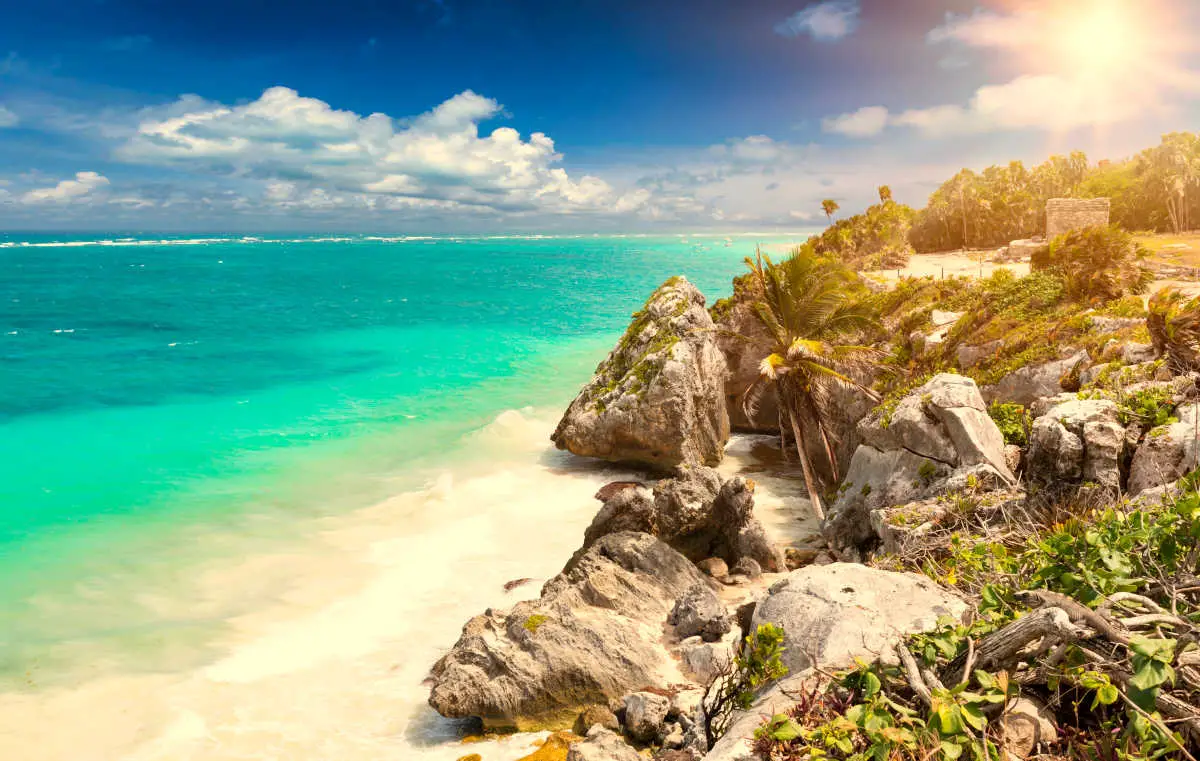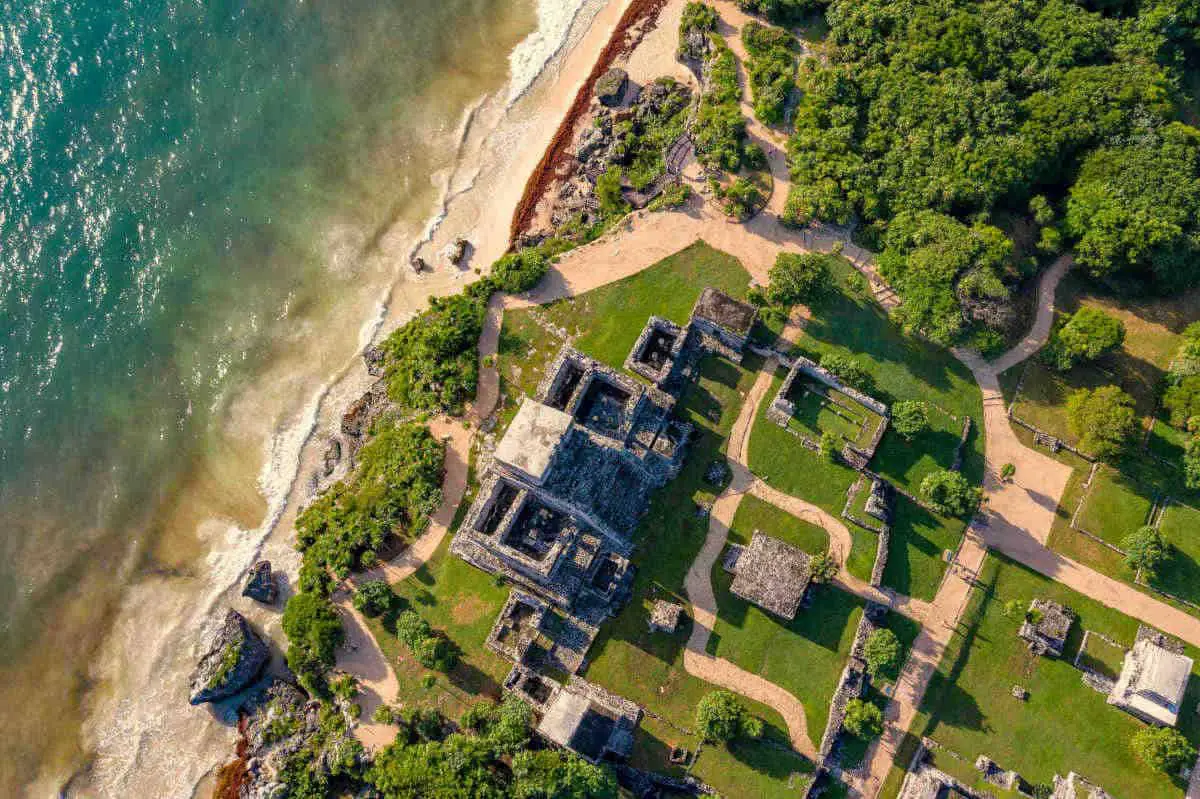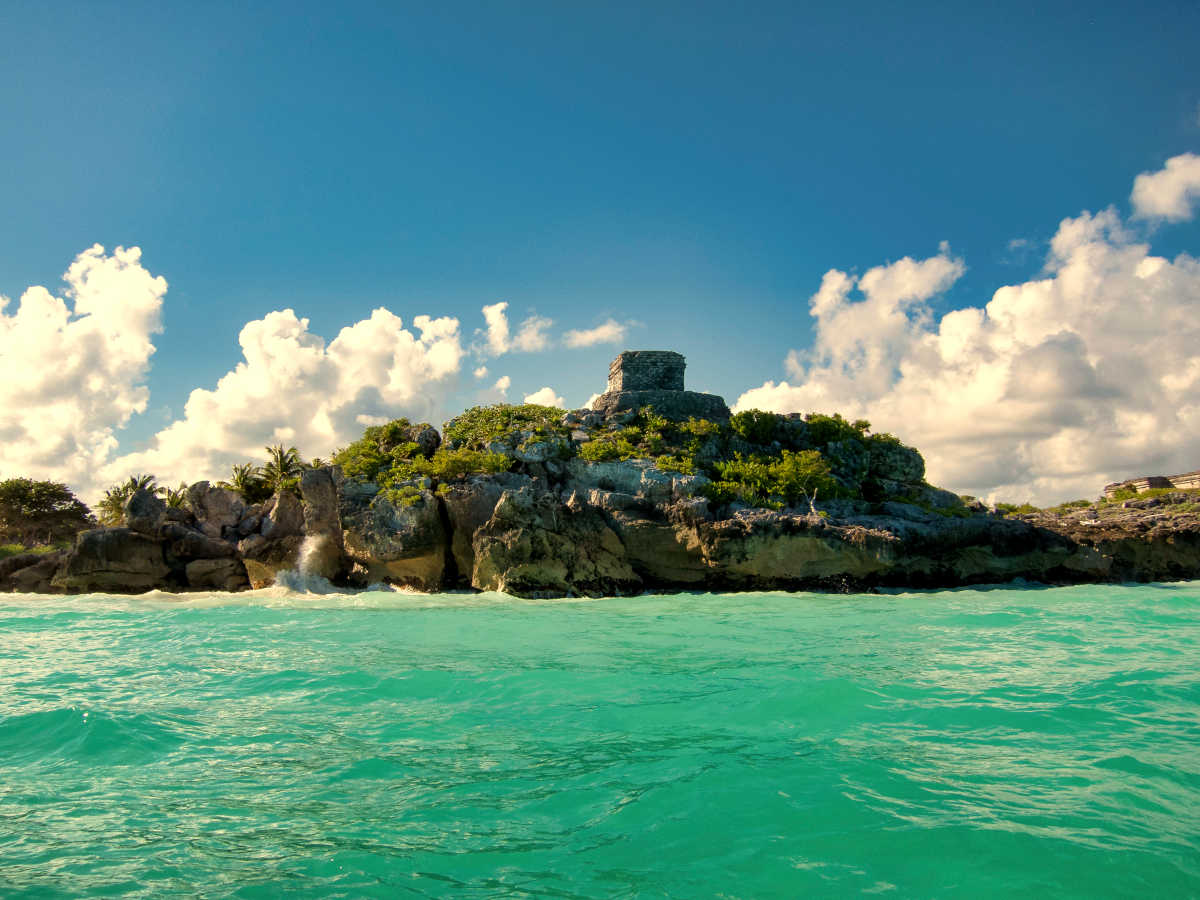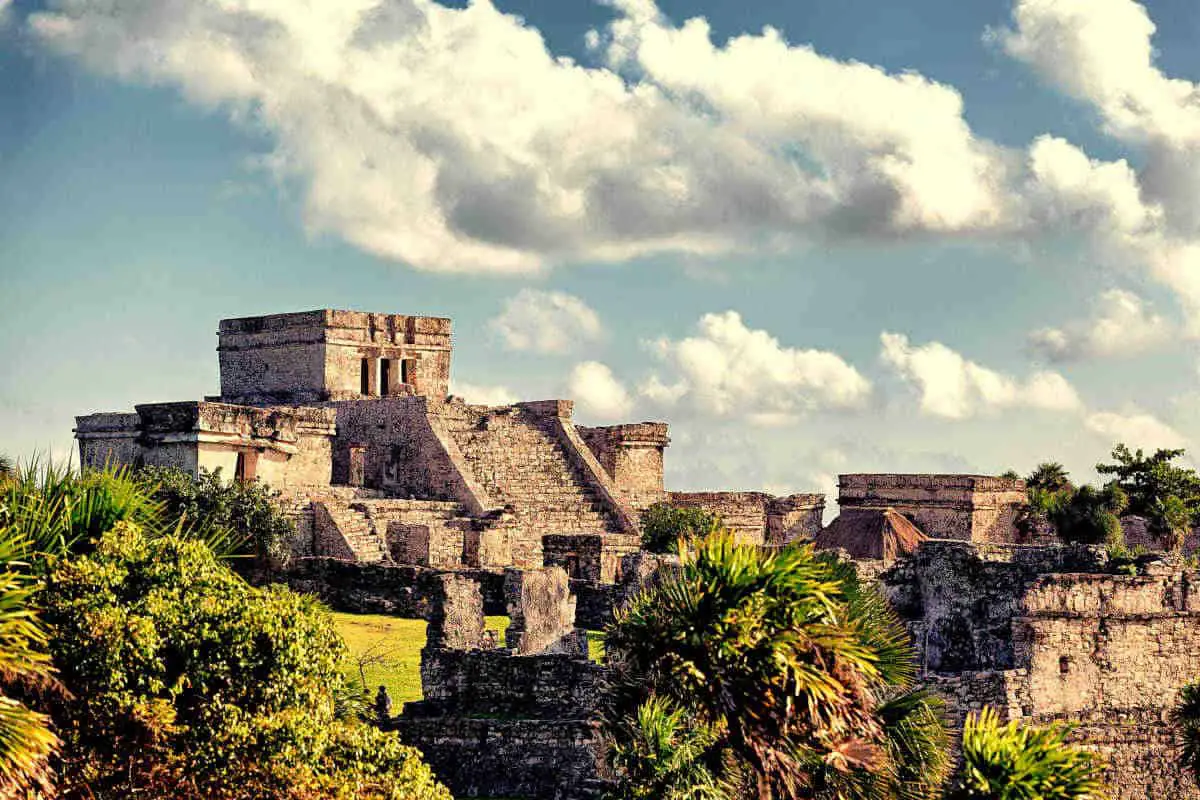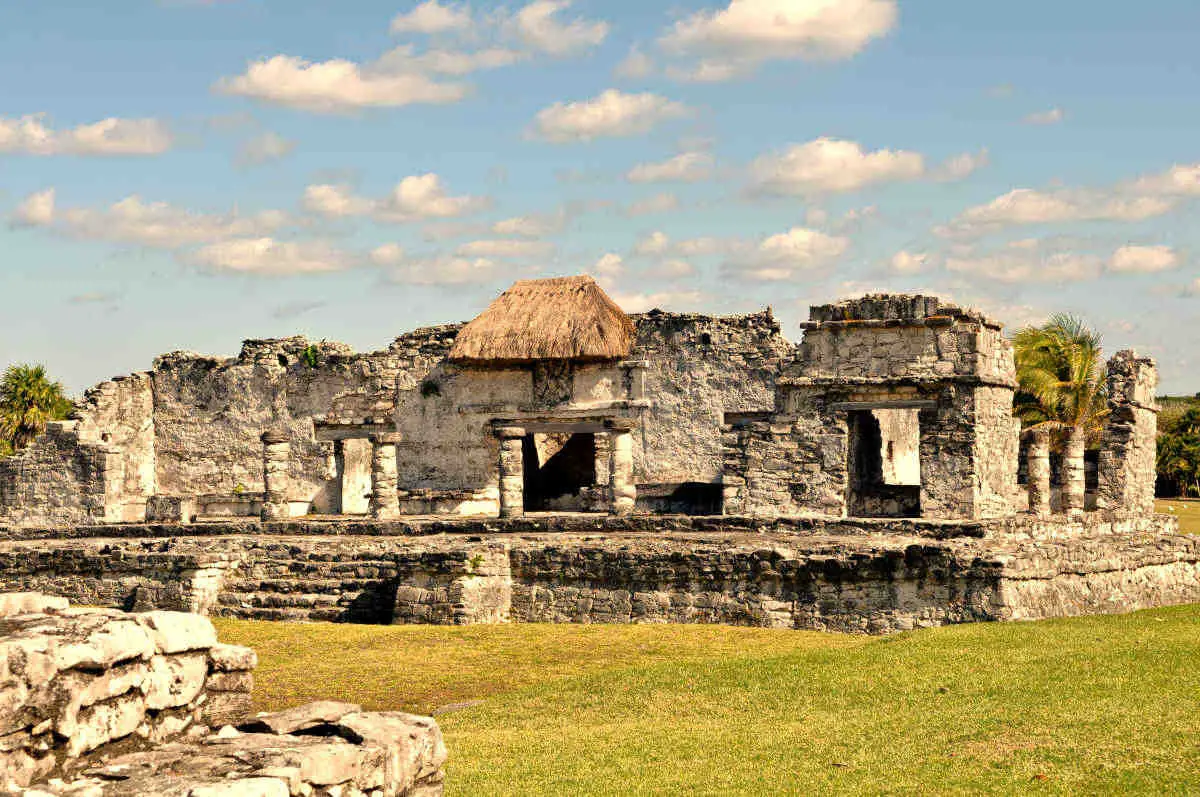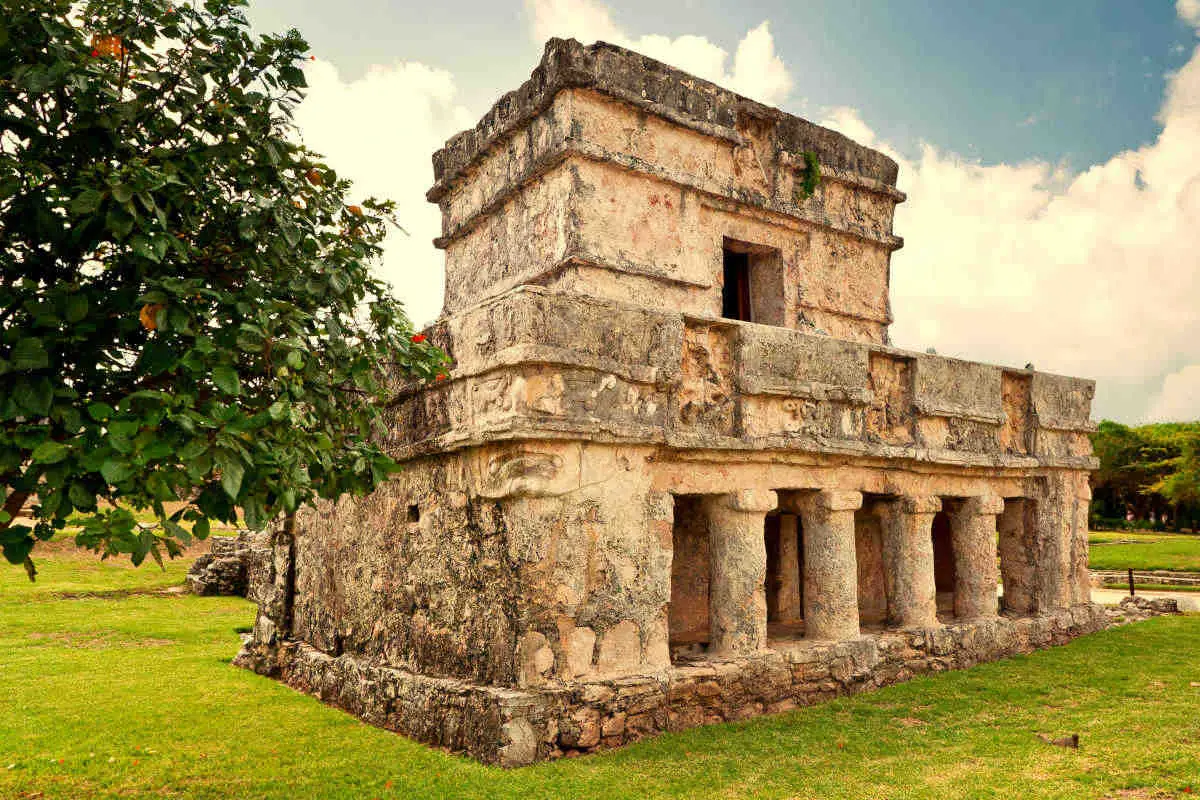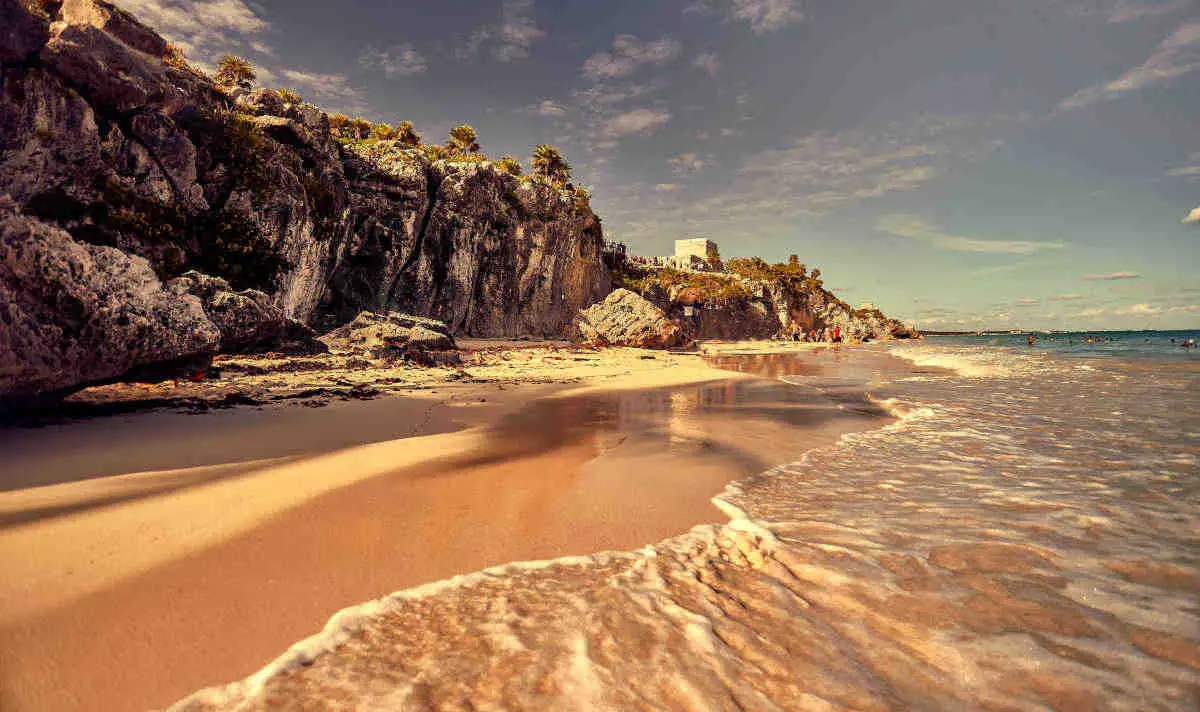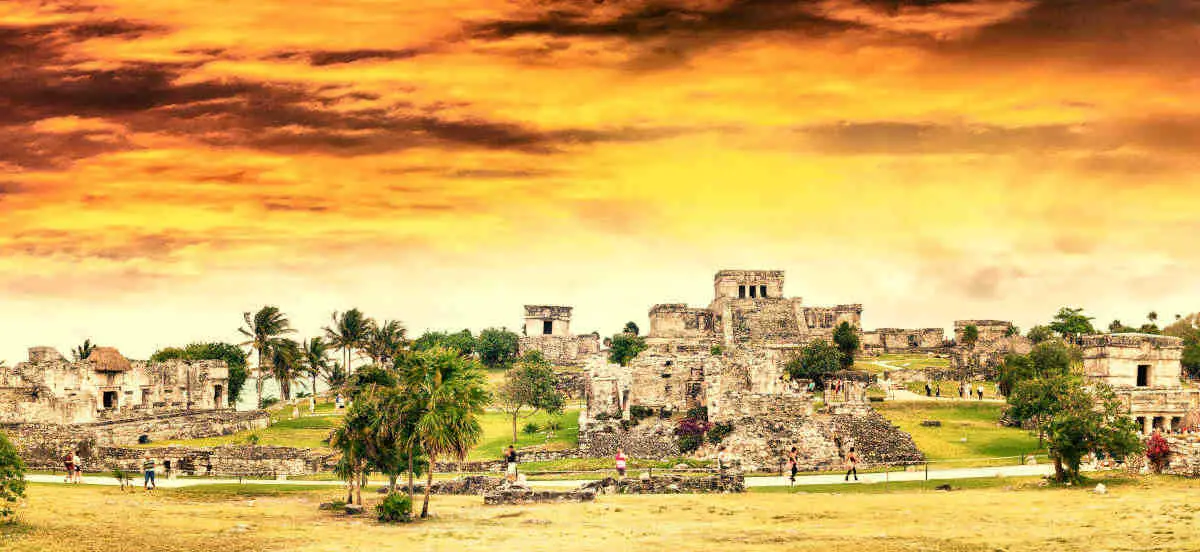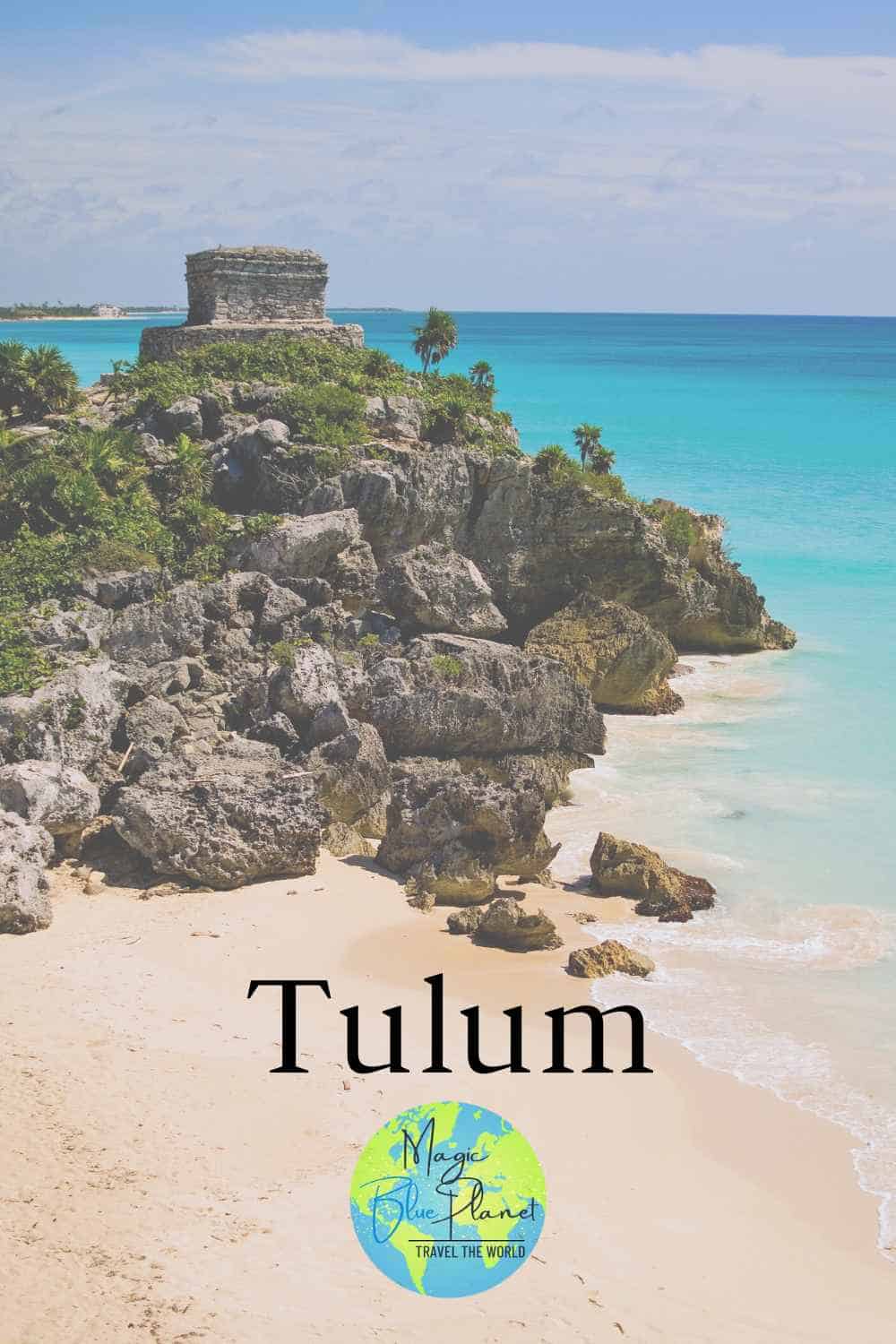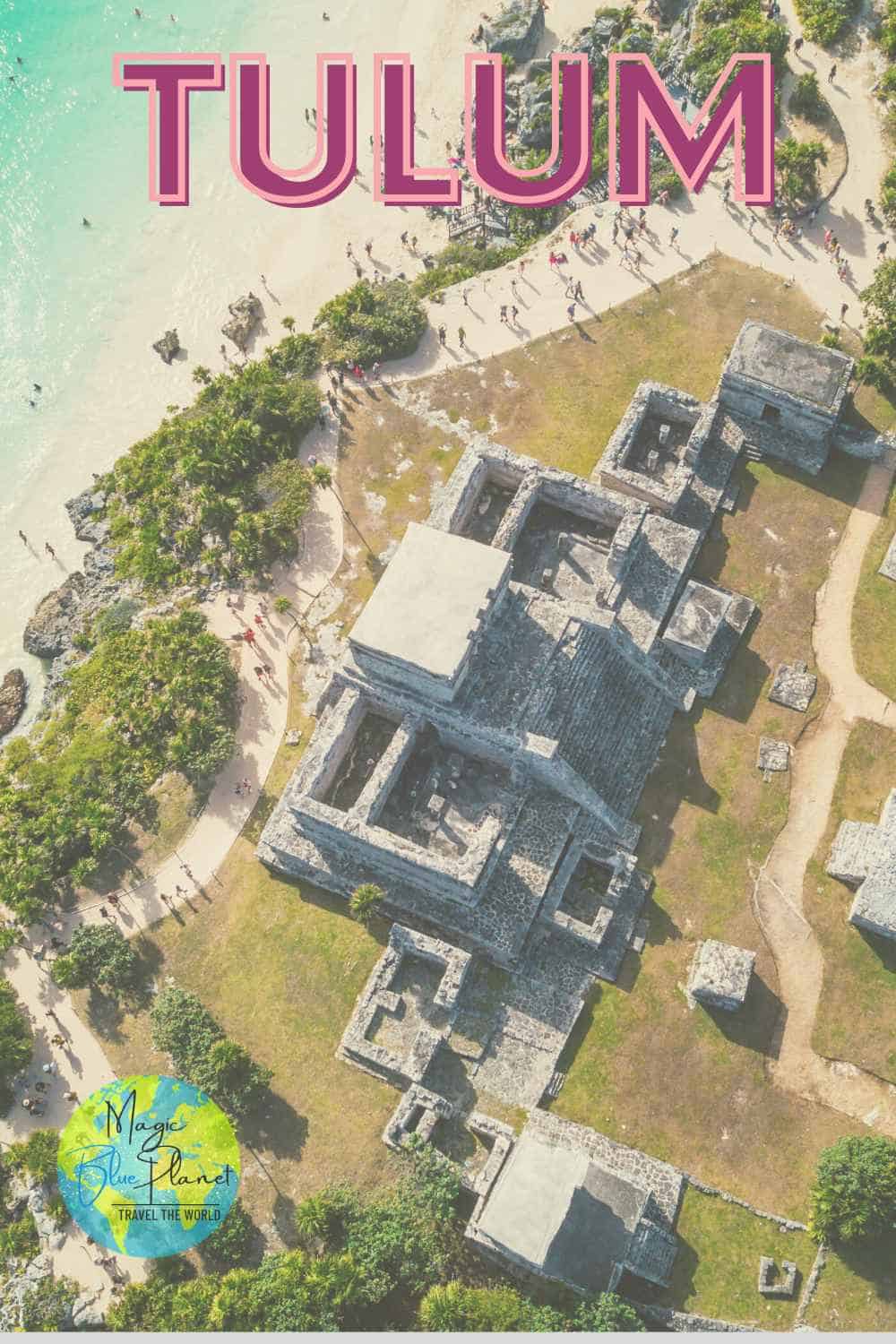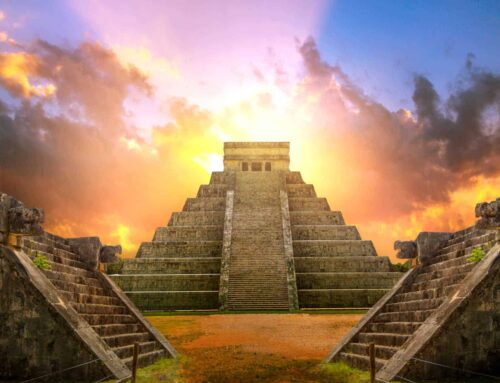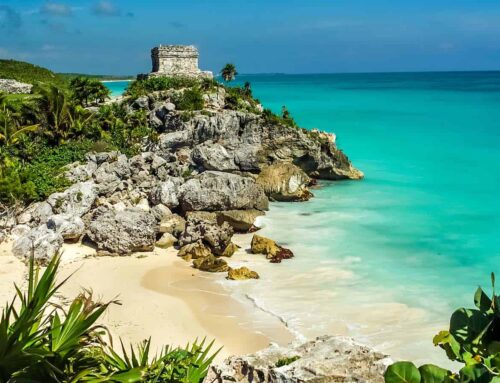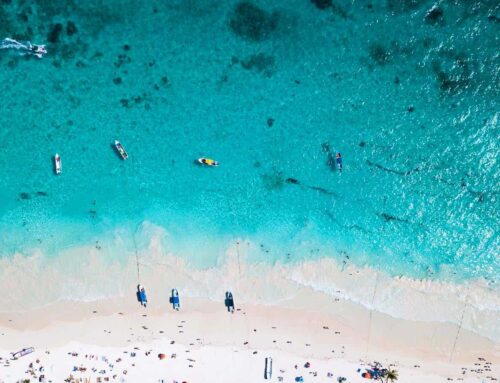Tulum – The ancient Mayan city by the sea
Tulum – The ancient Mayan city by the sea
Tulum – The ancient Mayan city by the sea
Tulum is a very trendy place in Mexico. Ideal for a great beach holiday with a proper share of nightlife. But that wasn’t always the case. The small town first became famous for the Mayan ruins of Tulum. Here is what you can discover there.
Content: Tulum – The ancient Mayan city by the sea
What does Tulum mean in the Mayan language?
The name of the city means “wall” or “fortress” in Mayathan. Probably the reason for this is that the whole city was surrounded by a six-meter-wide wall. The wall was only open to the sea. There were five entrances and two watchtowers. At that time, the city wall must have been practically unconquerable.
But earlier, around the 16th century, the city was also called Zamá. This name means “dawn” in the Mayan language. No wonder – the sunrise over the sea looks quite spectacular from the ancient town.
Where exactly is Tulum located?
Tulum is located in Mexico, more precisely in the state of Quintana Roo on the Yucatan Peninsula. The region is also known as the Riviera Maya. From Cancún to Tulum it is about 130 km to the south – two hours by car. From Playa del Carmen it is about 65 km, which you can do in an hour. And starting from the seaside resort of Tulum itself, the Mayan ruins are… well, actually on the outskirts of town.
Tulum on the map
Short history of the Maya in Tulum
The oldest date carved in stone in the Mayan city of Tulum is the year 564 AD. In the 13th and 14th centuries, the town was one of the largest Mayan cities on the Yucatan Peninsula. Probably because of its location by the sea, the city was an important hub for Mayan trade. The strong fortifications would also speak for this. The town was easy to defend.
When the Spanish arrived, Tulum was still an active religious center in the region. The annalist Juan Díaz first described the city in 1518. He said Tulum was about the size of Seville in Spain. And that was already quite a big and famous city at the time.
The American explorer John Lloyd Stephens was the first “modern” traveler to visit Tulum in 1841. He wrote extensively about the city. Together with the architect Frederick Catherwood, he discovered not only Tulum, but also many other ancient Mayan cities for the modern world. The journeys of the two adventurers are described in detail by their books and richly illustrated with detailed drawings.
During the Caste Wars of the Maya, Tulum was an important center of resistance. Between 1847 and 1901, the Maya fiercely resisted the Mexican occupation of their living space. During this time, Tulum was led religiously, politically, and militarily by a woman. This is remarkable, as these roles were not open to women in the Mayan culture.
However, María Uicab was a Mayan priestess whose authority was beyond question. She was called the “Queen of Tulum” and had a talking cross, an important oracle for the Maya. The Mexican army was not able to kill her until 1872. And for that, they needed a squad of 1000 men under arms.
The Mayan Ruins of Tulum
Unlike all other Mayan sites, Tulum is located directly by the sea. This privilege probably gave the town great importance as a port – also for the Mayan cities in the back country of the Yucatan Peninsula, some of which were much larger and more powerful.
If you are lucky enough to visit the old Mayan Ruins of Tulum, well – there are some things you should not miss.
1. El Castillo
El Castillo (“The Castle”) is the tallest building in Tulum and dominates the whole city. In fact, the Spanish annalist Juan Díaz wrote that it was the largest building he had ever seen. At its top there is a temple with three entrances decorated with columns in the shape of snakes. In front of the building there was a platform for ceremonies.
2. The Temple of the Descending God
The Temple of the Descending God (“Templo del Dios Descendente”) is located in the north of the ancient Maya town. It takes its name from the impressing mural relief in its facade. The descending God is often found in Tulum.
In the Mayan language it is called Ah Mucen Cab, which means the bee god. He is associated with sunset, rain, lightning and beekeeping. But it could also be possible that this building just was the residence of the sovereign.
3. The Temple of the Frescoes
Just next to the Temple of the Descending God begins the main street of the ancient Tulum, which used to be paved. Of course, there are also some buildings of importance there. The most famous is probably the Temple of the Frescoes (“Templo de los Frescos”).
It was richly decorated with murals depicting supernatural beings – surrounded by snakes, lizards, fish and other marine animals. The ground floor of the temple is decorated with columns and pillars. Presumably, the gods that were adored here, have been responsible for the fertility of the soil.
In the immediate vicinity there are also other buildings, such as the House of Columns and the House of Halach Uinik.
4. God of the Winds Temple
The God of the Winds Temple (“Templo del Dios del Viento”) is assigned to the god Kukulkán, who was the god of this element, because of its semicircular shape. Such a construction method was extremely rare among the Maya and can actually only be found in the pyramid of the wizard in Uxmal.
The Temple of the Wind God is located in the northeast of the city on a natural hill right by the sea. Nearby there is also the Casa Cenote, which emphasizes the importance of water for the Maya until our time.
For reasons of monument preservation, not all buildings in the archaeological zone are accessible to visitors today.
5. The beach of Tulum
In addition to the Mayan ruins and the breathtaking landscape, Tulum also has beautiful beaches to offer. After visiting all the sights of the ancient city, you should not miss a refreshing swim in the turquoise blue Caribbean Sea.
But be aware – food and larger luggage must not be taken to the beach.
What’s the best way to get to Tulum?
You can easily reach the archaeological zone of Tulum with a guided tour that is offered everywhere on the Riviera Maya. If you are in the fortunate position of spending your holidays in the village of Tulum, a bicycle is enough. You can borrow them everywhere.
Or by public transport, such as by bus with Autobuses de Oriente (ADO). You can book the tickets very cheaply online in advance. For example, Book Cancún – Tulum in advance or Playa del Carmen – Tulum at a really fair price.
Of course, you can also take a rental car to the ruins of the ancient Mayan town. City Car Rental offers you a nice service at fair prices.
Hotels near the Mayan Ruins of Tulum
It’s actually very easy to find nice hotels near the Mayan ruins of Tulum – the hotel zone is right next door. As well as the lovely town Tulum itself. You just have to decide whether you prefer to stay in a beach hotel or in a downtown resort. Just check it out.
Address & opening hours of the Mayan ruins of Tulum
Address: Carretera Chetumal 370, km 230
Open daily 9:00 a.m. – 4:15 p.m.
Entrance fee: 85 MXN (at the time of writing this article)
Facilities: The archaeological zone has its own car park in about 1 km distance. The route to the entrance can be done walking or in a small train (for a fee). In the complex itself you will find a nice shop and sanitary facilities. There is also disabled access to the ruins.
Is it worth visiting the Mayan ruins of Tulum?
Well, if you only travel to Mexico for the beach and the party, then you can save the time of a visit. But if you are interested in the exciting history of the country, you should not miss an excursion to the ancient Mayan city of Tulum. Personally, I liked it very much and I would love to come back at any time.
You might also be interested in this

